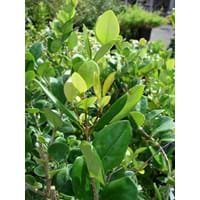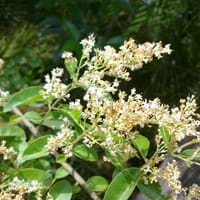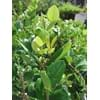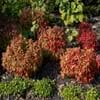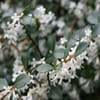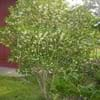Life Span
Annual
Perennial
Type
Broadleaf Evergreen
Broadleaf Evergreen
Origin
Eastern Asia
China
Types
Not Available
Ligustrum sinense concavum, Ligustrum sinense coryanum, Ligustrum sinense dissimile
Number of Varieties
Not Available
Habitat
foothill woods, Hills, Lowland
Not Available
USDA Hardiness Zone
7-10
8-10
AHS Heat Zone
Not Available
Not Available
Habit
Upright/Erect
Upright/Erect
Flower Color Modifier
Bicolor
Bicolor
Fruit Color
Green, Black
Dark Blue, Black
Leaf Color in Spring
Dark Green
Dark Green
Leaf Color in Summer
Dark Green
Dark Green
Leaf Color in Fall
Dark Green
Dark Green
Leaf Color in Winter
Dark Green
Dark Green
Leaf Shape
Acicular
Ovate
Plant Season
Spring, Summer, Fall, Winter
Spring, Summer, Fall, Winter
Sunlight
Full Sun, Partial Sun, Partial shade
Full Sun, Partial Sun, Partial shade
Growth Rate
Fast
Very Fast
Type of Soil
Loam, Sand
Loam, Sand
The pH of Soil
Acidic, Neutral, Alkaline
Acidic, Neutral, Alkaline
Soil Drainage
Average
Average
Bloom Time
Late Spring, Early Summer, Summer
Summer
Tolerances
Drought, Salt
Pollution, Drought, Salt
Where to Plant?
Ground
Ground
How to Plant?
Rooted stem cutting, Stem Cutting, stem tip cuttings
Cuttings
Plant Maintenance
Medium
Medium
Watering Requirements
Average Water Needs, Do not water frequently
Keep the ground moist but not water-logged
In Summer
Lots of watering
Lots of watering
In Spring
Moderate
Moderate
In Winter
Average Water
Average Water
Soil pH
Acidic, Neutral, Alkaline
Acidic, Neutral, Alkaline
Soil Type
Loam, Sand
Loam, Sand
Soil Drainage Capacity
Average
Average
Sun Exposure
Full Sun, Partial Sun, Partial shade
Full Sun, Partial Sun, Partial shade
Pruning
Remove damaged leaves, Remove dead branches, Remove dead leaves
Prune in spring
Fertilizers
All-Purpose Liquid Fertilizer, Apply N-P-K, fertilize in growing season
Fertilize just before the growing season begins
Pests and Diseases
Aphids, Bacterial leaf spot, Galls, Honey fungus, Red blotch, Wasps
Not Available
Plant Tolerance
Drought, Full Sun, Shade areas, Variety of soil types
Drought, Pollution, Salt
Flower Petal Number
Single
Single
Foliage Texture
Medium
Medium
Foliage Sheen
Glossy
Glossy
Allergy
Not Available
Not Available
Aesthetic Uses
Borders, Not Used For Aesthetic Purpose
Showy Purposes, small hedge
Beauty Benefits
Not Available
Not Available
Environmental Uses
Air purification
Air purification
Medicinal Uses
Antibacterial, Hypotensive, Tonic
Not Available
Part of Plant Used
Leaves
Whole plant
Other Uses
Used as an ingredient in coffee
Used as Ornamental plant
Used As Indoor Plant
No
No
Used As Outdoor Plant
Yes
Yes
Garden Design
Container, Foundation, Hedges, Mixed Border, Screening, Wind Break, Topiary, Bonsai, Espalier
Feature Plant, Hedges, Screening, Wind Break, Street Trees
Botanical Name
LIGUSTRUM japonicum
Ligustrum sinense
Common Name
Japanese Ligustrum
Waxleaf Ligustrum
Texas Privet
Waxleaf Privet
Chinese privet
In Hindi
Japanese Privet
Chinese privet
In German
japanische Privet
Chinesischer Liguster
In French
Privet japonaise
Chinese privet
In Spanish
Privet japonesa
aligustrina, ligustrina, ligustrín, o aligustre
In Greek
Ιαπωνικά Privet
Κινέζοι privet
In Portuguese
Privet Xapanese
Ligustrina
In Polish
Xapanese Privet
Chiński ligustr
In Latin
Japanese Privet
Chinese privet
Phylum
Tracheophyta
Magnoliophyta
Class
Magnoliopsida
Magnoliopsida
Order
Lamiales
Scrophulariales
Genus
Ligustrum
Ligustrum
Clade
Angiosperms, Asterids, Eudicots
Angiosperms, Asterids, Eudicots
Tribe
Not Available
Oleeae
Subfamily
Not Available
Not Available
Season and Care of Japanese Privet and Chinese Privet
Season and care of Japanese Privet and Chinese Privet is important to know. While considering everything about Japanese Privet and Chinese Privet Care, growing season is an essential factor. Japanese Privet season is Spring, Summer, Fall and Winter and Chinese Privet season is Spring, Summer, Fall and Winter. The type of soil for Japanese Privet is Loam, Sand and for Chinese Privet is Loam, Sand while the PH of soil for Japanese Privet is Acidic, Neutral, Alkaline and for Chinese Privet is Acidic, Neutral, Alkaline.
Japanese Privet and Chinese Privet Physical Information
Japanese Privet and Chinese Privet physical information is very important for comparison. Japanese Privet height is 150.00 cm and width 120.00 cm whereas Chinese Privet height is 460.00 cm and width 300.00 cm. The color specification of Japanese Privet and Chinese Privet are as follows:
Japanese Privet flower color: White
Japanese Privet leaf color: Dark Green
Chinese Privet flower color: White
- Chinese Privet leaf color: Dark Green
Care of Japanese Privet and Chinese Privet
Care of Japanese Privet and Chinese Privet include pruning, fertilizers, watering etc. Japanese Privet pruning is done Remove damaged leaves, Remove dead branches and Remove dead leaves and Chinese Privet pruning is done Prune in spring. In summer Japanese Privet needs Lots of watering and in winter, it needs Average Water. Whereas, in summer Chinese Privet needs Lots of watering and in winter, it needs Average Water.
